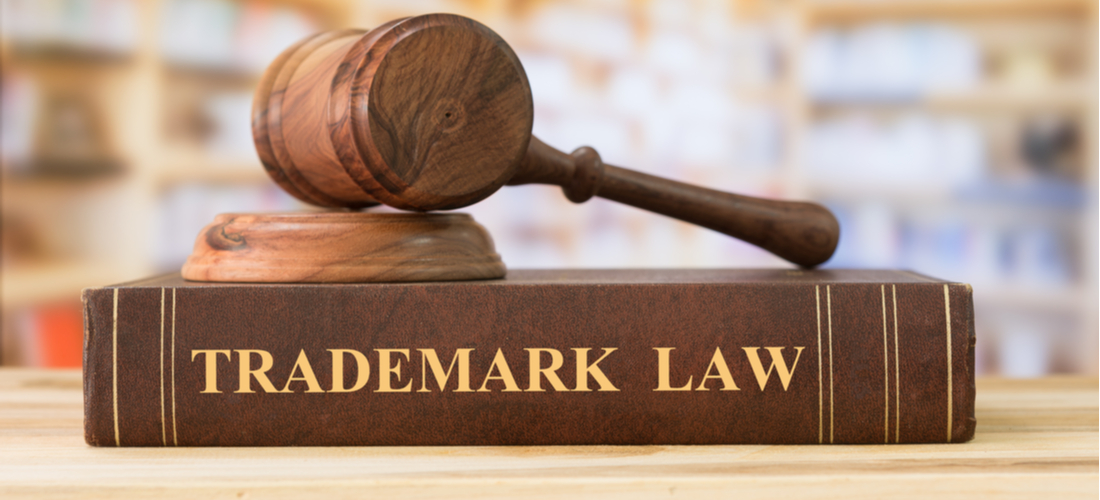Is it possible to file an opposition for the same trademark but for a different class? Let us know more in this blog.
A trademark is a word, phrase, symbol, or design used to identify a particular product or service. In order for your trademark to be considered valid and protectable, it must meet specific requirements under the laws of most countries. The first requirement is that the mark must be distinctive and not generic in nature. In other words, the mark should not be so common that others can use it to identify goods or services as coming from a single source. It should also not be so unique that it cannot be used by others without violating another party’s trademark rights. If you want to protect your brand name as a trademark, you must ensure that your company’s mark meets these two requirements. However, if your company uses a different trademark but with the same class of goods or services, you may have some issues on your hands. Let’s see can opposition be filed for the same trademark but different class in this article.
What is Opposition Filing?
When a third party believes that there is a likelihood of confusion between two trademarks, a trademark opposition is filed with the trademark office. As a result of this confusion, the reputation of an opposing party can be damaged. This is why filing an opposition for the same trademark in a different class can be challenging. In order to file an opposition for the same trademark but in a different class, you must first file a notice of opposition.
Due to the nature of this form, you will need to submit it online. It will not be accepted on paper. A notice of opposition should include information about your application, what you believe it should have been classified as, and any evidence supporting your argument. You might feel that your application should have been classified as Class 9 or Class 25 but was instead classified as Class 36.
Among the required information in a Notice of Opposition are:
1) Identification of the person filing the notice and the reason for their filing
2) A brief description and summary of your case
3) A legal basis for forming an opposition
4) All documents supporting your case, including those demonstrating how your mark was actually used before registration or how someone could confuse the marks if they were both identically marked.
How to File Opposition for the Same Trademark but in a Different Class?
A trademark opposition involves contesting a trademark application’s validity, ownership, and priority. It can be filed against a pending or future application. In order to file an opposition to an existing trademark, you must show that the mark is already being used on the goods or services listed in the application.
The following criteria must be met if you are opposing a future trademark:
- You have not abandoned your mark
- Your mark is being used for the same or similar goods/services as those listed in the pending application
- The applicant does not have any legal or legitimate interest in using the mark
- The proposed registration would confuse your existing and prior marks.
- If you are filing an opposition for a new trademark, you will need to demonstrate that:
- Your mark is not generic
- Your mark has acquired distinctiveness through use (or through intent to use)
- There is no likelihood of confusion and dilution between your new and pre-existing marks.
Expected Result of Oppositions for Different Classes
It may be easier to file an opposition against a trademark in a different class for some trademark owners. For example, suppose the trademark is registered for use as a service mark. In that case, you have more grounds for filing an opposition than if the trademark is registered for use in goods. If you are filing an opposition for the same trademark in a different class, the process will be similar. As a matter of fact, if you choose to file oppositions for different classes of trademarks, you may get better results because there are more ground rules for each type of opposition. The result should be significantly less time-consuming and more efficient since court proceedings are not required in this case.
Where to File an Opposition for a Trademark Filed under One Class
Suppose you have filed for a trademark and received the Trademark Office’s acknowledgement of receipt. In that case, it is best to file an opposition with the Trademark Trial and Appeal Board (TTAB) if your opponent has filed for a trademark under one class. When filing an opposition to the same class, you should be aware of certain considerations. The TTAB will examine whether or not the goods/services in question are identical, ask if there is sufficient evidence of intent to use the mark in interstate commerce, and determine whether the different classes can function together without creating confusion.
When It’s Advisable to File an Opposition for a Trademark Filed Under Different Classes
In general, it’s advisable to file an opposition against a trademark filed under different classes if the goods or services are not identical. If the goods and services are identical, then it’s recommended to withdraw the application. It is also advisable to file an opposition if there are significant differences in how the trademark is used. Suppose there are no significant differences in how the trademark is used.
It may be beneficial to register the same trademark in another class. Suppose you’re not sure whether you should file an opposition for a trademark filed under different classes or withdraw your application for one that has been filed under one class. In that case, it may be helpful to contact a Trademark Lawyer beforehand. Your work is made more accessible with Vakilsearch. Get in touch with a trademark attorney today by choosing our option.
How to File an Opposition for a Trademark Filed under Different Classes?
There are two ways to file an opposition for a trademark.
- The first one is when the applicant has filed for their trademark under different classes
- The second is when they have not filed for their trademark under different classes. When an applicant files for their trademark under different classes and has not filed for their trademark under other classes, certain guidelines should be followed to file an opposition against the application.
It is only permitted to file an opposition in accordance with
- Section 513 (a) (2) of the Trademark Act if (A) there is a likelihood of confusion or deception between the registered mark and the opposing party’s mark or
- (B) the applied-for mark was adopted or acquired before such date.
- In accordance with Section 513(a) (3), ‘the standards shall be applied class-by-class when determining whether there is a likelihood of confusion between the registered mark and any applied-for mark.’
Each class of goods and services should be examined individually when examining whether there is confusion or deception between the two marks. For instance, let’s say you’ve decided that it would be wise to oppose an application that has been filed with goods in Class 6, but you want to oppose it by filing it under Class 9.
Should You File Opposition for Same Trademark but Different Class?
The answer to that question is not as straightforward as you might expect. Before filing an opposition for the same trademark in a different class, there are a number of factors to consider. The first factor to consider is the purpose of the application. Is it successful to file an opposition for the same trademark but in a different class? When anyone opposes your application, you won’t be able to file again until your opponent’s deadline has passed. You will not be able to re-file your application in that class if your opponent doesn’t win their opposition. The primary benefit of opposing the same trademark in a different class would be to avoid any confusion in the market. In other words, if your opponent’s mark is used too close to yours, it could cause some confusion among consumers.
As a rule of thumb, trademarks are directly related to the goodwill that a particular company/manufacturer has acquired over time. Suppose anyone besides the manufacturer is allowed to use that trademark. In that case, it will violate the Right of the manufacturer and confuse the minds of the Consumers. Other than the manufacturer/company, this person will benefit from the goodwill of the trademark, which took the authorized person so many years to build.
Final Words
The opposition process can be lengthy, so it is important to know that there are two types of opposition. The first type includes trademarks for which the opposition is filed before any other party has filed an application for the same trademark in the same class. The second type includes trademarks for which the opposition is filed after another party has already applied for the same trademark in that class. All oppositions filed by a trademark owner will include information about the filing party and their identification number. Still, it doesn’t have to if they don’t want to share this information. You might be wondering if filing an opposition for the same trademark is worth the effort. It is worth it if it helps you establish your position! Get in touch with Vakilsearch and register your trademark today.
We Offer You
If the Registrar has a question or objection regarding your trademark application, it is called a trademark objection. Get an effective response drafted by India’s foremost experts in trademarks. You will increase your chances of securing your trademark. We can start the process for you by just paying ₹499!
FAQs:
1. Who can oppose a Trademark Application in India?
During the trademark application phase, anyone can object to a trademark application filed by an applicant for various reasons. Under Section 21 of the Trademark Act, any person can oppose a trademark, regardless of whether he has a commercial or personal interest in the matter. Trademarks can be countered by a customer, a member of the public, a competitor, or anyone else. The opposition must also be filed by a prior registered trademark owner.
2. Who decides whether the trademark should be abandoned or registered?
After a trademark opposition is filed, both parties need to decide whether the trademark should be abandoned or registered. Oppositions can, however, be filed at any time. Any person who believes the published mark might lead to confusion among the public can file an opposition. At the same time, the trademark registrant is responsible for defending the mark.
Read more










